Together, you’ve helped make the 2022 North East Ladybird Spot the biggest yet but there’s still time to get involved and help our ladybirds this year
In just a few months, you’ve shared an incredible 1,532 records as part of the North East Ladybird Spot! With sightings of a fantastic 26 species, not only have you already passed the total number of sightings shared last year but by joining surveys, attending events and recording in your area, you’ve helped make this year’s Ladybird Spot the biggest and best yet!
From familiar species such as the 7-Spot Ladybird and Orange Ladybird encountered readily in urban areas, to regional rarities such as the cryptic Water Ladybird, from Berwick to Teesside, your sightings are revealing a wealth of new information about the distribution and ecology of these colourful insects in our region.
As we reach the halfway point of this year’s project, take a closer look at your highlights and discoveries so far in the blog post below and remember, there is still time to get involved throughout the rest of 2022.
Ladybirds in cemeteries
From the urban cemeteries of Tyneside and Durham to rural sites in Northumberland, early in the year, many of you joined a dedicated survey of the North East’s cemeteries organised by NHSN’s Invertebrate Specialist Group. Together, you found Harlequin and Orange Ladybirds to be incredibly numerous in urban areas but also discovered a suite of other species including Pine, Larch, 2-Spot and 10-Spot Ladybirds.
With hundreds of sightings submitted from cemeteries alone, your sightings are revealing new information about ladybird distribution in our region and highlighting clear differences between urban and rural sites. Furthermore, by noting extra information such as the aspect of gravestones and the species of tree present, you’re highlighting more than just numbers. These additional facts will help assess what it is that makes our cemeteries so appealing to ladybirds.
The ladybirds in cemeteries survey will return in autumn this year. Please keep an eye on your NHSN e-news for further updates…
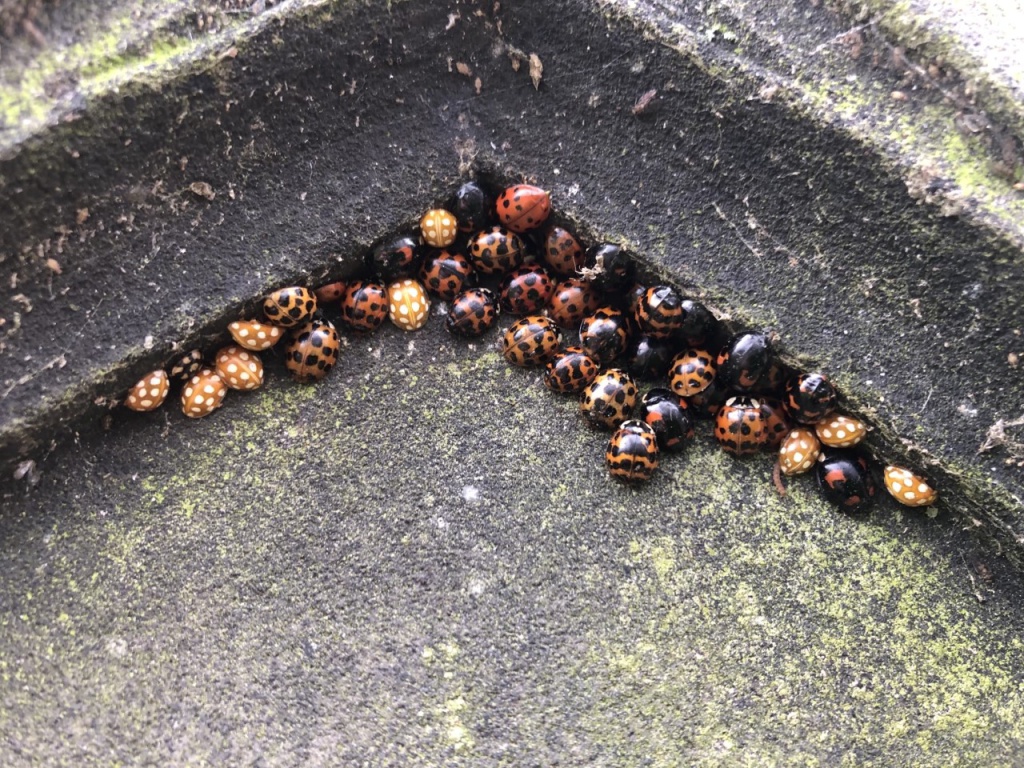
Orange and Harlequin Ladybirds © Clare Freeman 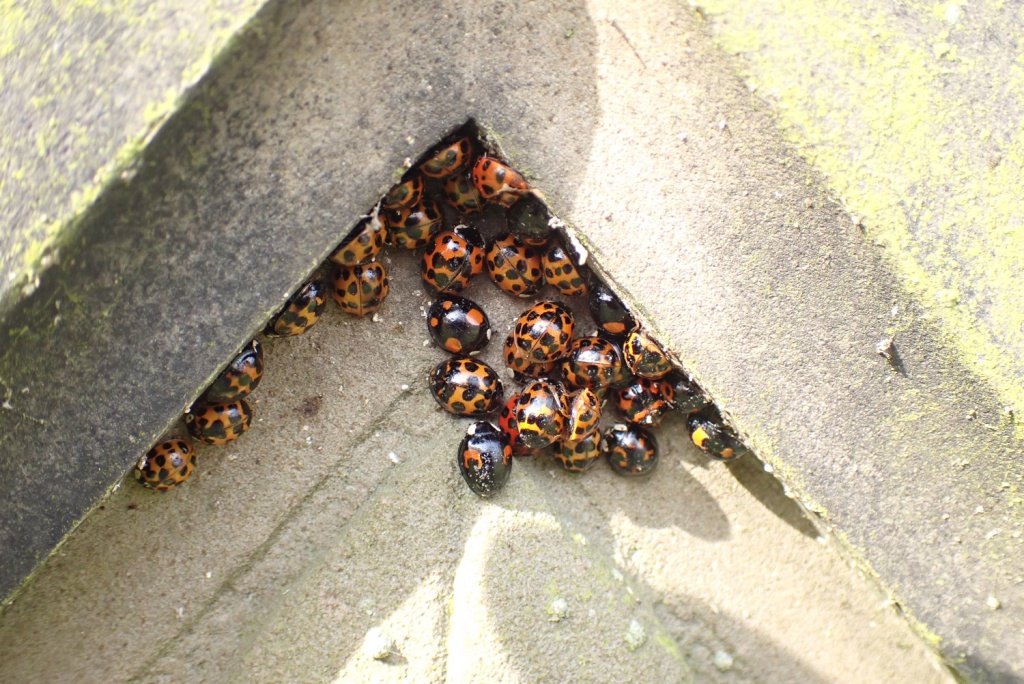
Harlequin Ladybirds © Joe Dobinson
Exciting discoveries
This year alone, a number of exciting discoveries have been made as part of the North East Ladybird Spot. Among these, sightings of the rare Heather Ladybird at Rothbury and Dipton Woods marked the first Northumberland records since the 1980s and the Cream-streaked Ladybird, a fairly recent arrival to the UK, was spotted for the first time in Tyneside. Elsewhere, you’ve also revealed new sites for elusive and poorly understood species such as Hieroglyphic and 11-Spot Ladybirds.
More numerous but often difficult to find, by turning your attention to areas rich in conifers, you’ve also revealed new locations for some of our region’s specialist ladybirds. Not least, the eyecatching Striped Ladybird and regionally scarce 18-Spot Ladybird. Encountered infrequently during the 2021 North East Ladybird Spot, it has also been great to see Pine and Larch Ladybirds recorded at a wider range of sites this year.
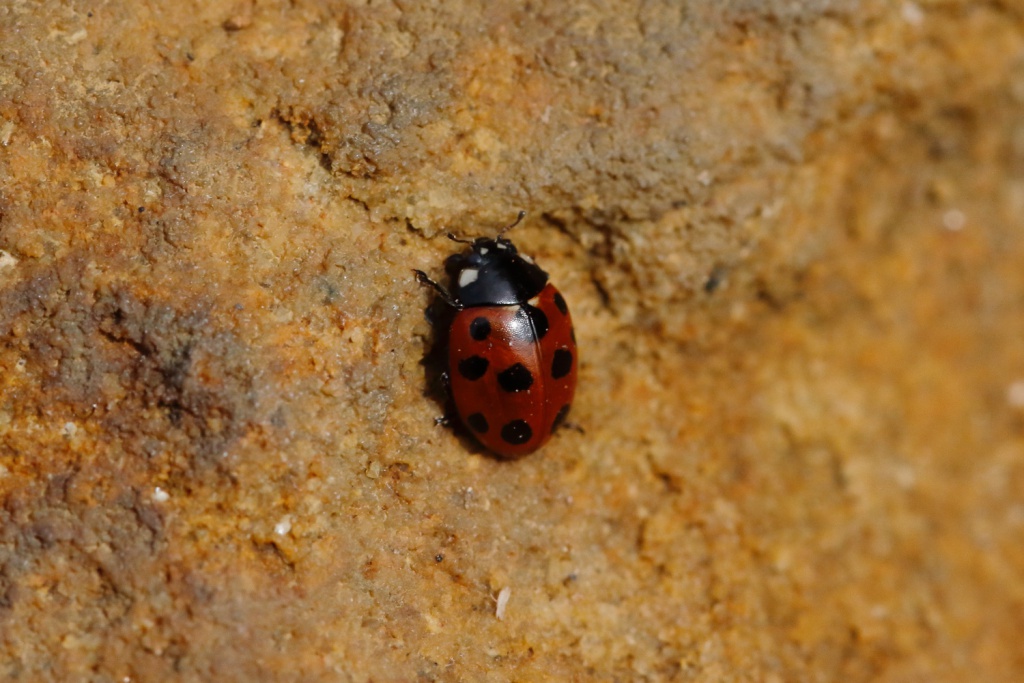
11-Spot Ladybird © Chris Barlow 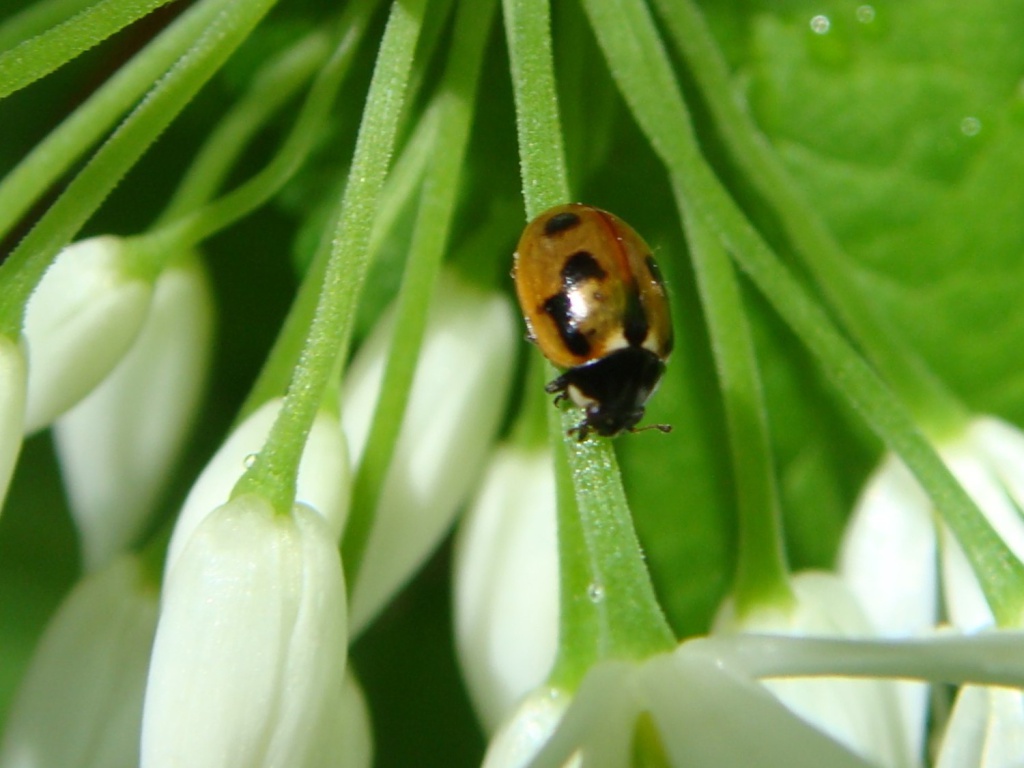
Hieroglyphic Ladybird © Louise Hislop
Inconspicuous ladybirds
A real standout of this year’s Ladybird Spot has been the increase in sightings of our region’s smaller ladybirds. Tiny and often rather drab, these inconspicuous species look world’s apart from their larger and more colourful cousins, but that hasn’t stopped by trying your hand at seeking them out.
To date, five inconspicuous ladybird species have been spotted so far including the Meadow Ladybird and Pine Scymnus. A new species for the North East, the conifer-loving Epaulet Ladybird has also been encountered for the first time at two sites close to Newcastle. Find out more here…
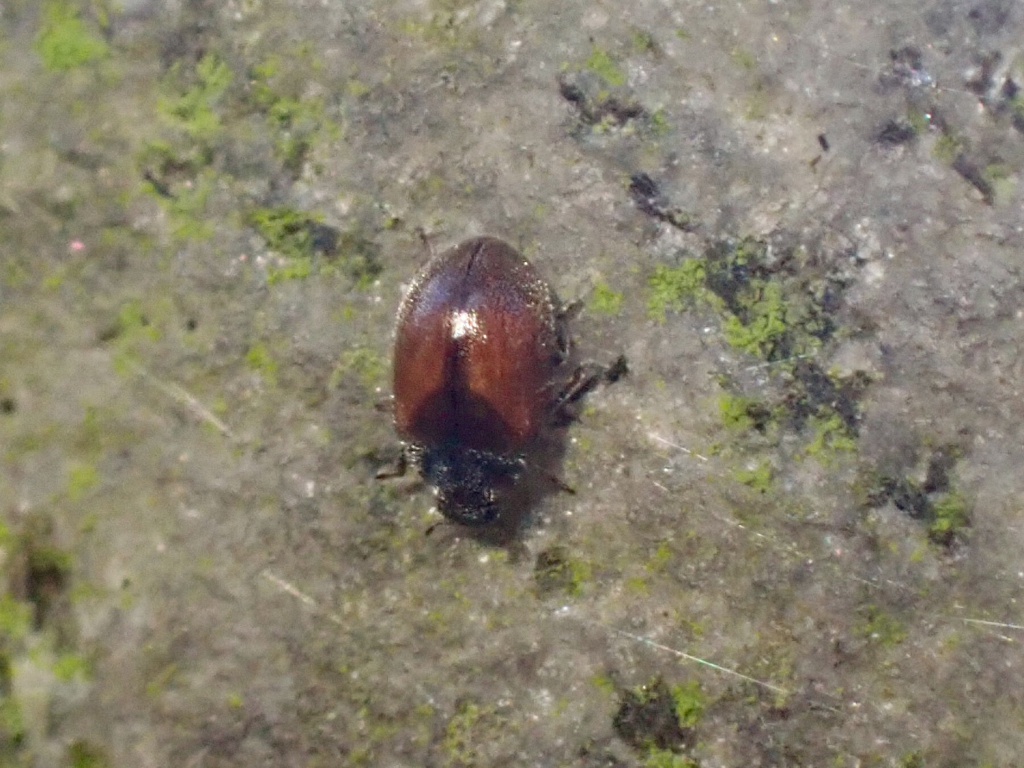
Pine Scymnus © Joe Dobinson 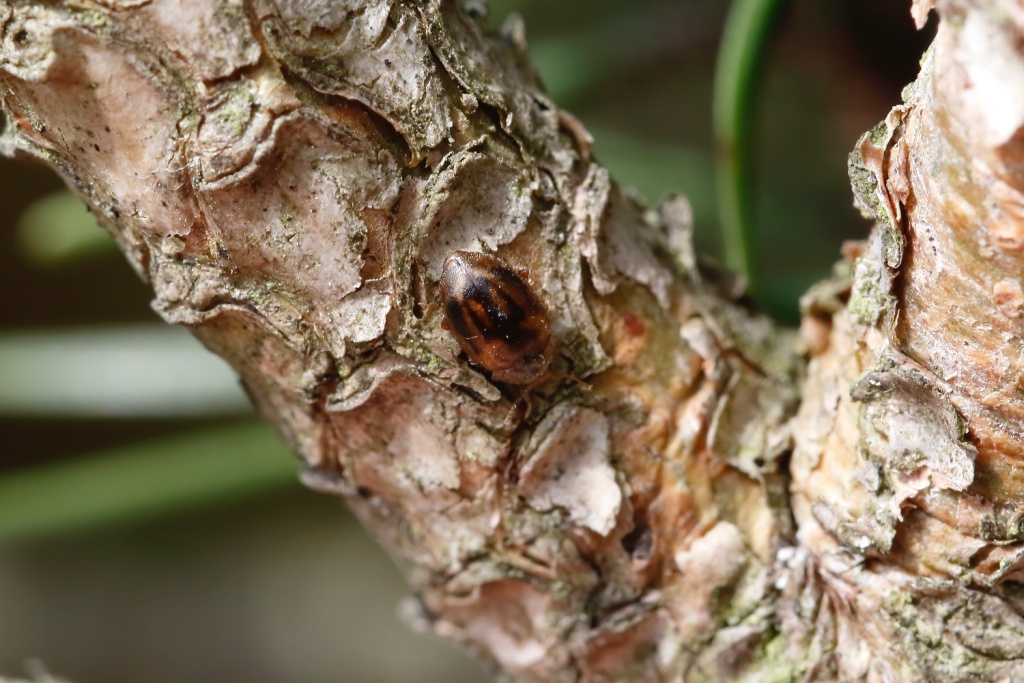
Epaulet Ladybird © Chris Barlow
Changes to the leaderboard
Mirroring last year’s results, things remain unchanged at the top of the ladybird leaderboard with Harlequin and 7-Spot Ladybirds making up your ‘most recorded’ species. Unsurprising perhaps given how easy these species are to come by in a wide range of habitats across the North East. Further down the list, things begin to get interesting, and this year you’ve been noticing a proportionately larger number of other species than you did in 2021.
Records of the distinctive Orange and Cream-spot Ladybirds have increased dramatically this year and many more of you have been encountering the variable 10-Spot Ladybird in habitats ranging from city gardens to coastal dunes. With few records in 2021, sightings of the brown but beautiful Larch Ladybird have seen a fantastic increase in all corners of our region and with summer rapidly approaching, more of you have been noticing yellow ladybirds out and about. Records of 14-Spot Ladybird with its striking square spots are now coming thick and fast and it will not come as a surprise if this species moves further up the list.
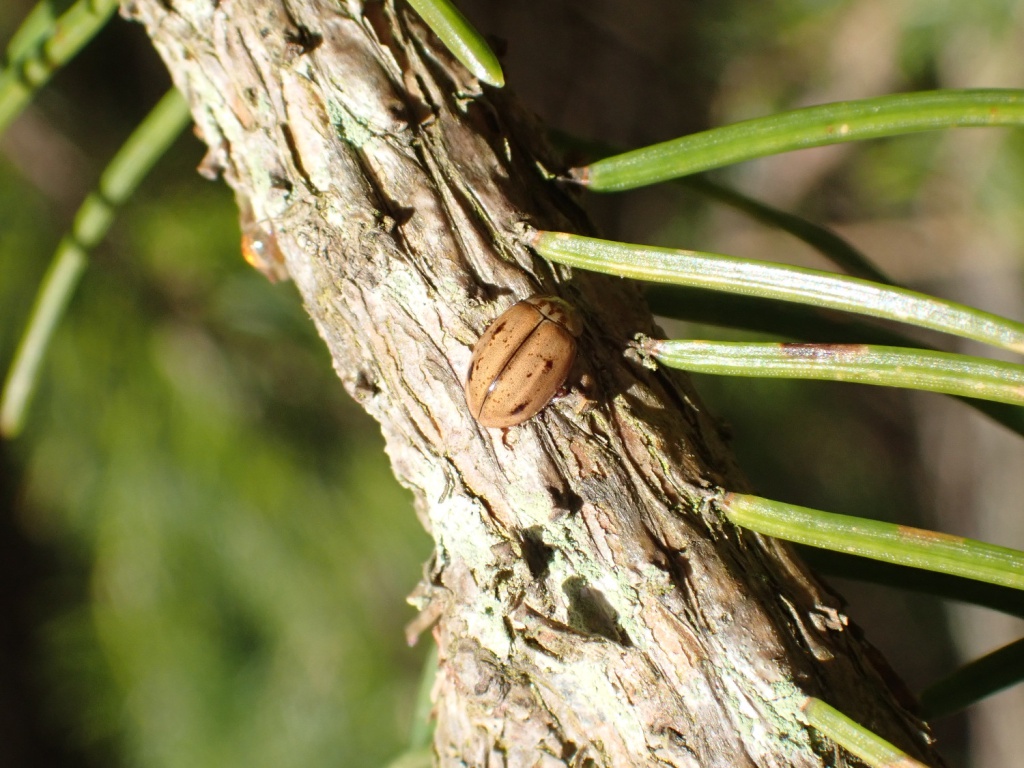
Larch Ladybird © Charlotte Rankin 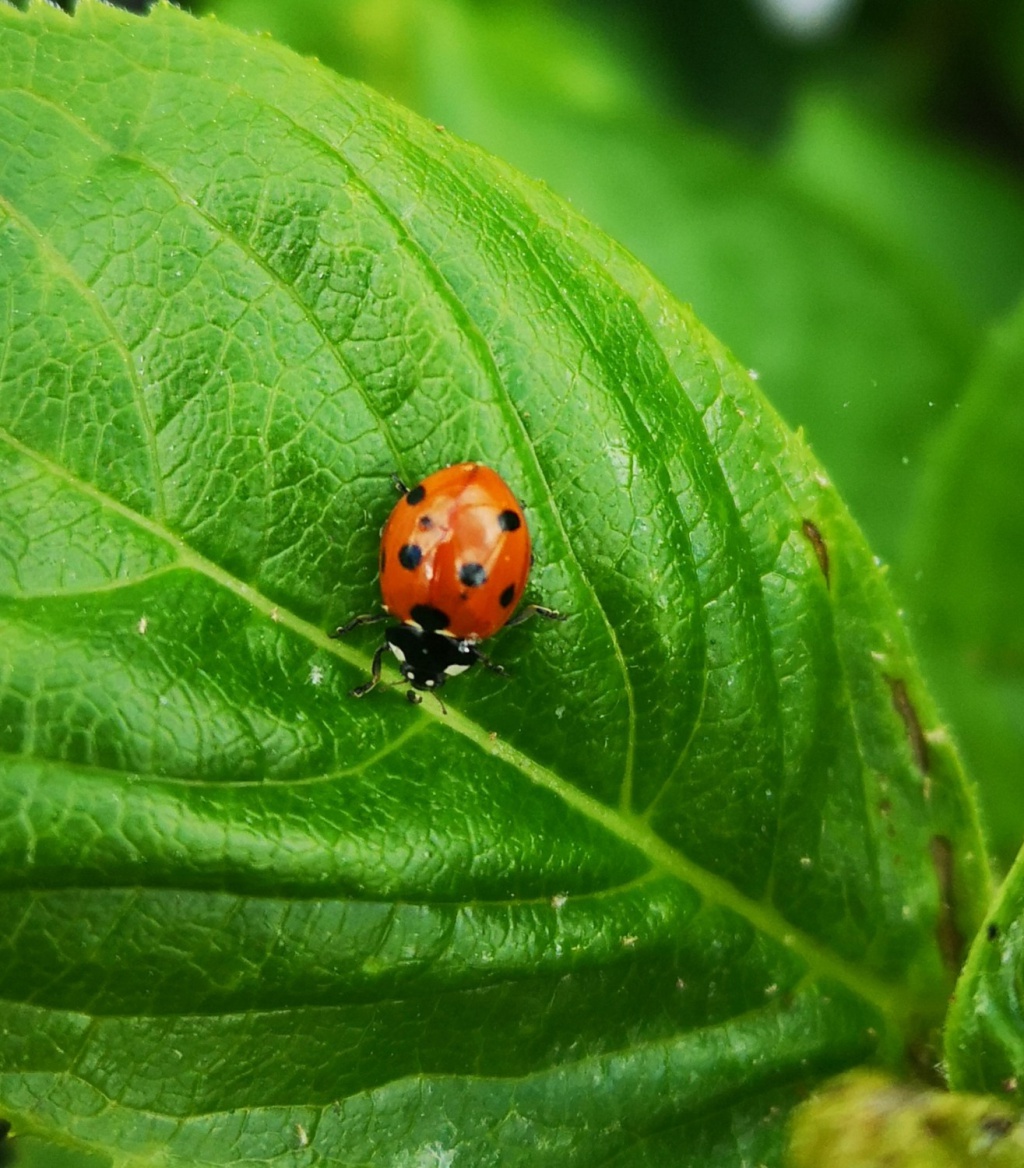
7-Spot Ladybird © Sheila Brunger
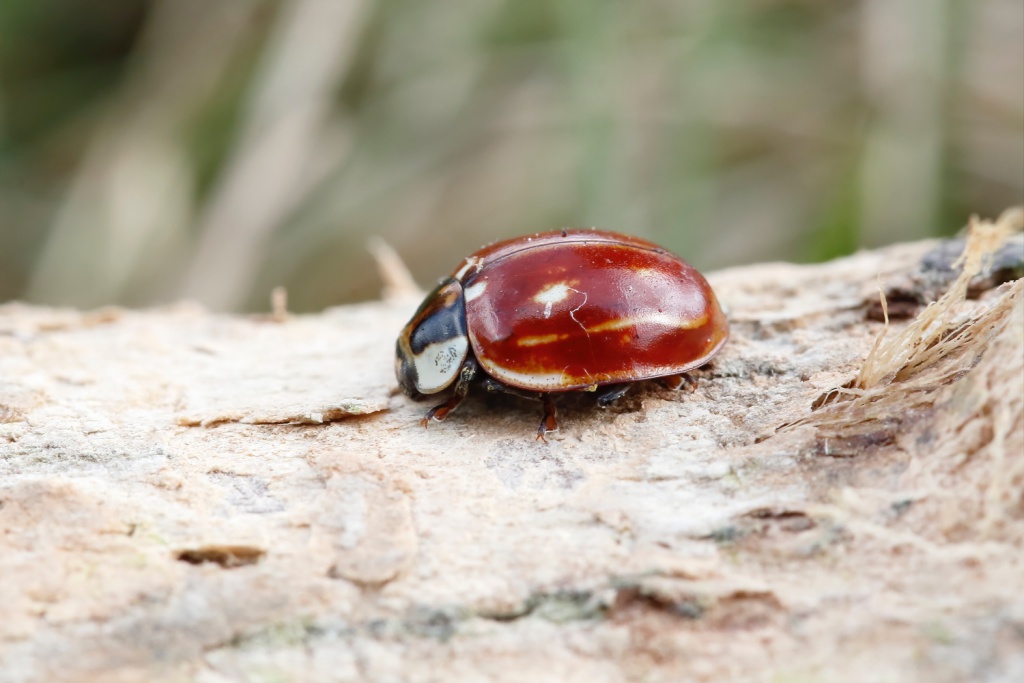
Join the North East Ladybird Spot
Urban or rural, beginner or expert, we need your help to record ladybirds across the North East.
Your sightings can add to our understanding of ladybirds in the region and inform conservation and monitoring efforts.
Taking part is easy and sighting of all ladybird species are welcome. Please join in today.